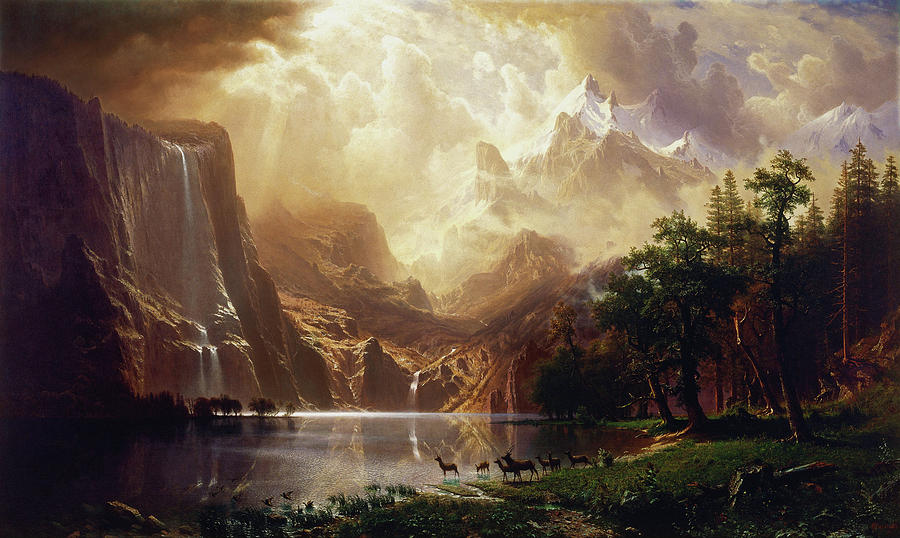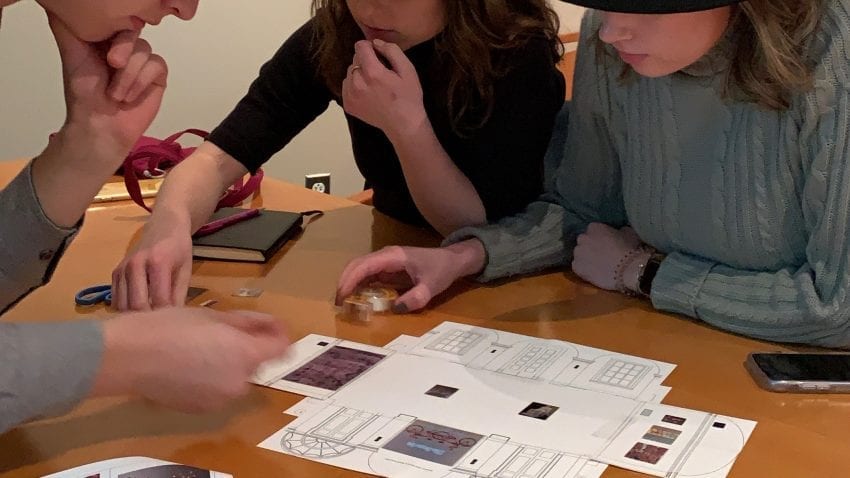Hello and welcome back to the blog! I’m Elijah Leer.
As Professor Epstein briefly acknowledged in a recent post, on the morning of January 8, we were lucky enough to visit the Smithsonian American Art Museum. The Museum itself opens at 11:30am, but we were allowed in at 9am for a special guided tour and program, as well as a Q&A with some of the staff. In preparation for the visit, I did a bit of research into the Museum’s history and mission, and I would like to share some of this research with you.

John Varden, the founder of the eventual Smithsonian American Art Museum.
The Smithsonian American Art Museum began in 1829 as a small collection of European art, displayed in the home of optimistic Washingtonian John Varden. Varden wanted Washington to have its own center of cultural appreciation, and in pursuit of his goal, he slowly expanded his catalogue of paintings. In 1846, the so-called Varden Museum was overshadowed by the founding of the Smithsonian, and by 1858, most of the former’s holdings had been moved into the latter’s newly constructed castle. The collection remained there for the next 50 years, until the death of James Buchanan’s niece and first lady Harriet Lane. The renowned art collector had decreed in her will that a National Gallery of Art was to be established, and the Smithsonian felt that Varden’s paintings were an excellent basis for the new museum. The resulting publicity led to a number of high-profile art donations, and the gallery grew exponentially. However, at this point, something of an identity crisis struck. Andrew Mellon had donated a large collection of European art to the Smithsonian, with the intention of starting an entirely new National Gallery of Art housing exclusively European works. Instead of competing with Mellon’s Gallery, the original Gallery decided to focus exclusively on American art. It changed its name to reflect the new mission and has operated in earnest ever since. It has been known as the Smithsonian American Art Museum since the year 2000, and according to its website, its exclusive mission is the “acquisition, promotion, and interpretation of the work of artists in the United States.”
With this information in mind, we entered the Museum (hereafter called SAAM). We were met by two docents, Phoebe Hillemann and Geoffrey Cohrs, who supplied excellent tours of the various artworks and subtly prepared us for the activity to come. They took the opportunity to point out different images of the American identity, contrasting such paintings as Albert Bierstadt’s Among the Sierra Nevada and Sam Gilliam’s April 4, shown below. As we returned to the classroom, it had become clear that the SAAM does not seek to display a common, unifying identity; instead, it highlights the vast diversity of experiences found in the United States and encourages its visitors to confront them. Additionally, Phoebe told us that only five percent of the SAAM’s collection is on display at any given time, suggesting that its curators have a huge influence on what the museum’s message is. By selecting certain pieces for display, curators highlight (and silence) specific voices and carefully shape the museum narrative as they see fit. I certainly trust the museum to represent as many voices as possible, but over the last few days, I’ve also been thinking about the power this gives them over public perception. Not having arrived at a conclusion, I can only say that a large responsibility rests on them.

Among the Sierra Nevada by Albert Bierstadt. This painting combines a number of elements found in the Sierra Nevada, creating a beautiful, if falsified landscape.

April 4 by Sam Gilliam. In contrast to the Sierra Nevada, this painting reflects the chaos that followed the 1968 assassination of Martin Luther King, Jr. Deeper meanings are left up to the viewer.
With this understanding setting in, the aforementioned activity began, and we were put in the position of curators. Given tiny dioramas of museum showrooms and even smaller copies of paintings we had seen throughout the museum, we were split into groups and asked to create a cohesive display that properly represented American identity. After what we had seen and learned, this proved nearly impossible, and we struggled with what to include in our room.

Diligent Oles work on their museum dioramas and get a taste of the intricacies of curating in the process.
Eventually, my group decided to contrast the blind idealism of the U.S., shown in the Bierstadt, with the more realistic and difficult discourse embodied in the Gilliam. We presented the spectrum between these two ideas along the inner walls, asking viewers to determine which paintings most accurately captured American identity and hoping that they might see how all of the paintings and none of them did so. As part of the activity, we were given far more paintings to consider than we were allowed to display, so many were left abandoned, not to be seen by our imaginary guests. But this is the role of the curator! We had an argument to make, and we were asked to choose the works that would best support that argument. The entire experience was fantastically educative, and I came away with a deeper understanding of the museum process and how a curator works. I also clearly have a lot to think about, and I’m so excited that I have a full month here to do so. Until next time!
Works Cited
https://americanart.si.edu/about/history
https://americanart.si.edu/about/history/patrons
https://www.si.edu/Museums/american-art-museum
https://www.si.edu/newsdesk/factsheets/smithsonian-american-art-museum
